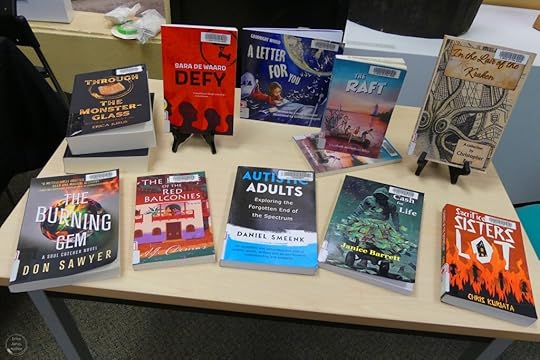Libraries and Third Spaces
During the first COVID lockdowns, when you couldn’t walk around a neighbourhood without people crossing the street to avoid you, I found myself gravitating to our local botanic garden. I drove by one day, just escaping the four walls of our home for a little while, and found the parking lot gates at the garden wide open. No one was in the ticket booth, but a couple of other cars were there, so I pulled in tentatively, parked my car and got out to walk around. It was wonderful, having the freedom to stroll along the pathways on a cool spring day in the fresh air. There was no need to wear a mask – besides me, there were only a handful of other people.
I returned regularly. It became my ‘third place’, where I watched the landscape change in subtle ways, and shared brief conversations with fellow devotees amidst days of isolation. A woman I met suggested I head over to the Rock Garden to check out the spring hellebores. An older gentleman and I had regular chats while his more virus-timid wife walked several feet away. Some people just sat on blankets on the lawns. But we were all there for the same reasons: for fresh air, the comfort of nature, and the companionship, whether silent or conversational, of other human beings in those tension-fraught days.
 The almost-empty Niagara Falls Botanic Garden in April 2020 – by E. Jurus, all rights reserved
The almost-empty Niagara Falls Botanic Garden in April 2020 – by E. Jurus, all rights reservedWhat are “third places”?
They are social surroundings apart from our first place, our home, and our second place, usually work. They are places to be sociable, a milieu where we feel comfortable hanging out, without any pressure. They can be anything from a local pub to a workout gym to a church to a…garden.
In the COVID years, our first and second places often merged, which made the need for an additional place even more critical. My hubby was an essential worker and was going to his job daily, but by happenstance I chose to retire from full-time work just before the first lockdown. I spent three months tying things up in my job from a computer station on our dining room table, communicating by email or virtual meetings, but once that was done, I was stuck in the house, apart from long lines at the grocery stores. Our botanic garden was a lifeline for me.
Back when I was a teenager, I wouldn’t have spoken freely to anyone at the garden. I was inordinately shy, and for that period in my life, our local library was my third place. I didn’t have conversations there, except with the odd librarian and a friend who worked there part-time, but it was a place of community, of a shared love for books and reading. Libraries still serve the same functions today, and have embraced the communal aspect by holding children’s activities, workshops, adult speaker series (I was a regular guest speaker myself before the pandemic), even local author showcases.
I’ve participated in two of those myself so far, and have another coming up next month. Sometimes visitors buy a copy of my novels, and sometimes we just chat about reading, novels, the appeal of different genres, the importance of stories. Libraries are the literary version of that garden – public spaces where people with the same interests feel comfortable gathering together.
The concept of third places was developed by sociologist Ray Oldenburg in the 1980s. He and his co-author Karen Christensen for a book about it set out seven typical characteristics. They are
Open and inviting – a place where one can come and go freely, without an appointment, or an invitation.A place of belonging, informal and comfortableConveniently located – often in one’s own neighbourhood, like a pub, but for those of us who live in suburbs there are no such places and we have to drive, or take a bus.Unpretentious, as in nothing special required to visit, neither in status or finances.Where regulars we might recognize and associate with, congregate, and perhaps with a greeter (like a friendly librarian).Where conversation – including discussions and gossip – is the main activity.Of a light, playful and amicable mood.“Your third place is where you relax in public, where you encounter familiar faces and make new acquaintances.” White, Rebekah (July–August 2018). “A third place”. New Zealand Geographic (152): 6.
In my novels, while Tempus College is a ‘second’ place for both the staff and students, the Village, a replica of an old English town, really becomes a ‘third’ place for them – local, friendly (when not haunted), unpretentious and inviting – and each pub or tea room within it a breakout space within it. If you, as a reader, enjoy the Village, you’re entering the third place of the people who frequent it for a short while. Layers upon layers, especially as my novels are now available for lending at my local library, which has brought me full circle from my days as a reticent teenager.
 My novels in the St. Catharines Public Library – by E. Jurus, all rights reserved
My novels in the St. Catharines Public Library – by E. Jurus, all rights reservedWhat’s your favourite third place? I hope you have one – a place like the pub on the Cheers TV series, where “everyone knows your name”.
I’ll be at the Thorold Public Library on May 10, 2025 from 1pm to 4pm for their Local Author Showcase; maybe I’ll see you there!



